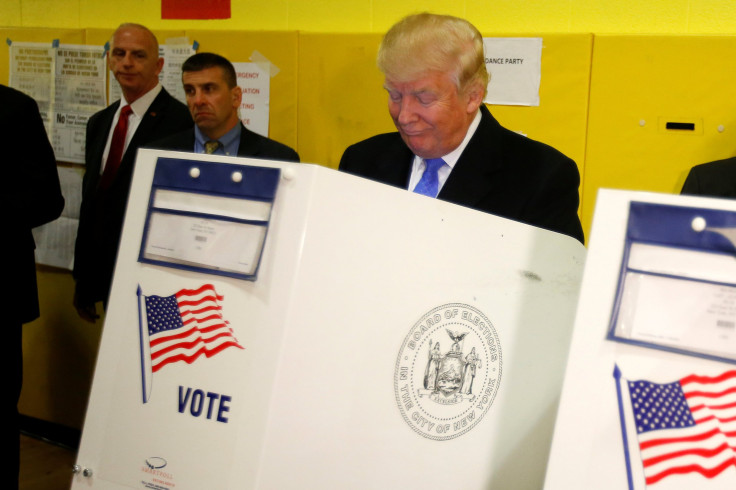Will Donald Trump Win The Election? Republican Nominee's Chances Of Beating Hillary Clinton To Claim The Presidency

A campaign that was written off as a mere theatrical blip on the political landscape in its early months has now entered its final hours with the presidency still up for grabs. Donald Trump may be an underdog as Americans across the country head to the polls to cast their vote, but he should be far from discounted.
The final round of polling released on the eve of the election showed Hillary Clinton with the edge nationally from anywhere between 3 and 7 percentage points. Meanwhile, Nate Silver’s FiveThirtyEight model, which correctly predicted the winner of all 50 states four years ago, gives Trump a 28 percent chance of earning the keys to the White House. The data-driven model forecasts Clinton getting an average of 302 Electoral College votes, significantly more than the 270 required to claim victory.
However, the percentage attributed to a likelihood of a Trump presidency is more than three times higher than it was for Mitt Romney beating Barack Obama four years ago. And many of the polls remain within the margin of error.
A Trump victory would not be the first unexpected election result in the calendar year. In Britain, a majority for the Conservative Party in the general election last year and the vote to leave the European Union in June were surprises. More recently, the Colombian people’s vote against a peace deal with the FARC rebels in September also ran contrary to pre-vote expectations.
Heading into this presidential election, many of the key battleground states were considered up for grabs. In Florida, Clinton was up by just a single point, while in North Carolina the margin was only 2 points. As for Ohio, a state that has voted for the winner of every election since 1964, Trump is up by a single point in a CBS News/YouGov poll, although he is behind by the same margin in a Columbus Dispatch poll.
Working against Trump are polls that show he trails by 4 points in Pennsylvania and 5 points in Michigan. In addition, the Clinton campaign is also optimistic about a surge of Latino voters that could help her win Nevada. The big problem for Trump is that his path to 270 is much narrower than Clinton’s. A loss in states like Florida, Ohio, Iowa and North Carolina create improbable paths to victory.
© Copyright IBTimes 2025. All rights reserved.





















